Description
Flame Retardant ABS 3d Filament Sample Pack now available at WOL3d. We have 25 types of Different types of filaments which can be purchased as trial packs. Each Pack consist of 10mtr filament sample which is almost 35 grams.
This Flame Retardant ABS 3d Filament Sample Pack is specially made for trial purpose. you can try this to get an idea about filament and then go for bigger spool.
For beginners, choosing which filament to buy and keep can be one of the hardest decisions you can make when you’re still starting. After all, you’re still not sure how each filament behaves and what color looks nice. An easy way to deal with this is to go for filament sample packs instead like the Flame Retardant ABS 3d Filament Sample Pack .
Flame Retardant ABS 3d Filament Sample Pack are a great product to ease your way in to the world of 3D printing. They’re fun, inexpensive, and non-committal – at least, in terms of filament types and colors.
Flame Retardant ABS 3d Filament Sample Pack 10 meter is a high-end “easy to use” impact modified Flame Retardant ABS type of 3D printer filament which is optimized for FFF / FDM 3D printing technology. Flame Retardant ABS 10 meter is tougher and less rigid than standard Flame Retardant ABS and its improved filament flowing behavior and interlayer adhesion make Flame Retardant ABS 10 meter an extremely easy to print filament.
Check our Instagram page for more updates and what products are being created using Flame Retardant ABS 3d Filament Sample Pack .
PLA PRO+ With Improved Formula
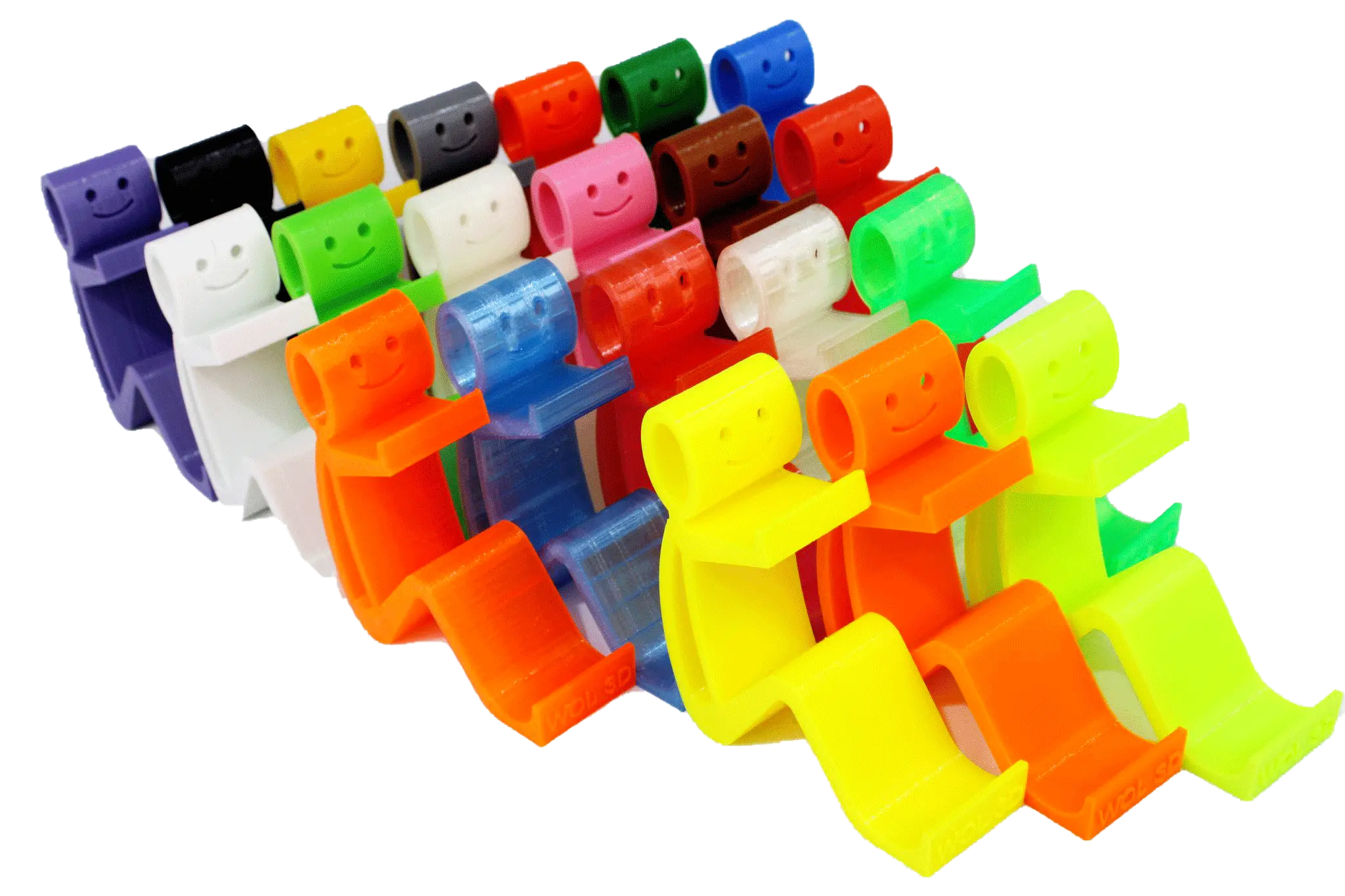
| PLA – Polylactic Acid | |
| Name | PLA PRO+ |
| Strength | High |
| Flexibility | Low |
| Durability | Medium |
| Difficulty to Use | Low |
| Print Temperature | 190°C – 220°C |
| Print Bed Temperature | 20°C – 60°C (but not needed) |
| Shrinkage/Warping | Minimal |
| Diameter | 1.75mm |
When should I use PLA PRO+ 3D printer filament?
In this case, the better question might be, When shouldn’t I use PLA? Compared to other types of 3D printer filament, PLA is brittle, so avoid using it when making items that might be bent, twisted, or dropped repeatedly, such as phone cases, high-wear toys, or tool handles. s, PLA makes for a good overall choice in filament. Common prints include models, low-wear toy. You should also avoid using it with items which need to withstand higher temperatures, as PLA tends to malform around temperatures of 60°C or higher. For all other applications, prototype parts, and containers.
ABS PRO+ With Improved Formula

| Acrylonitrile Butadiene Styrene (ABS) | |
| Name | ABS PRO+ |
| Strength | High |
| Flexibility | Medium |
| Durability | High |
| Difficulty to Use | Medium |
| Print Temperature | 220°C – 240°C |
| Print Bed Temperature | 80°C – 110°C |
| Shrinkage/Warping | Considerable |
| Soluble In | Esters, Ketones, and Acetone |
| Diameter | 1.75mm & 2.85mm |
When should I use ABS PRO+ 3D printer filament?
ABS is tough – able to withstand high stress and temperature. It’s also moderately flexible. Together these properties make ABS a good general-purpose 3D printer filament, but where it really shines is with items that are frequently handled, dropped, or heated. Examples include phone cases, high-wear toys, tool handles, automotive trim components, and electrical enclosures.
TPU Flexible
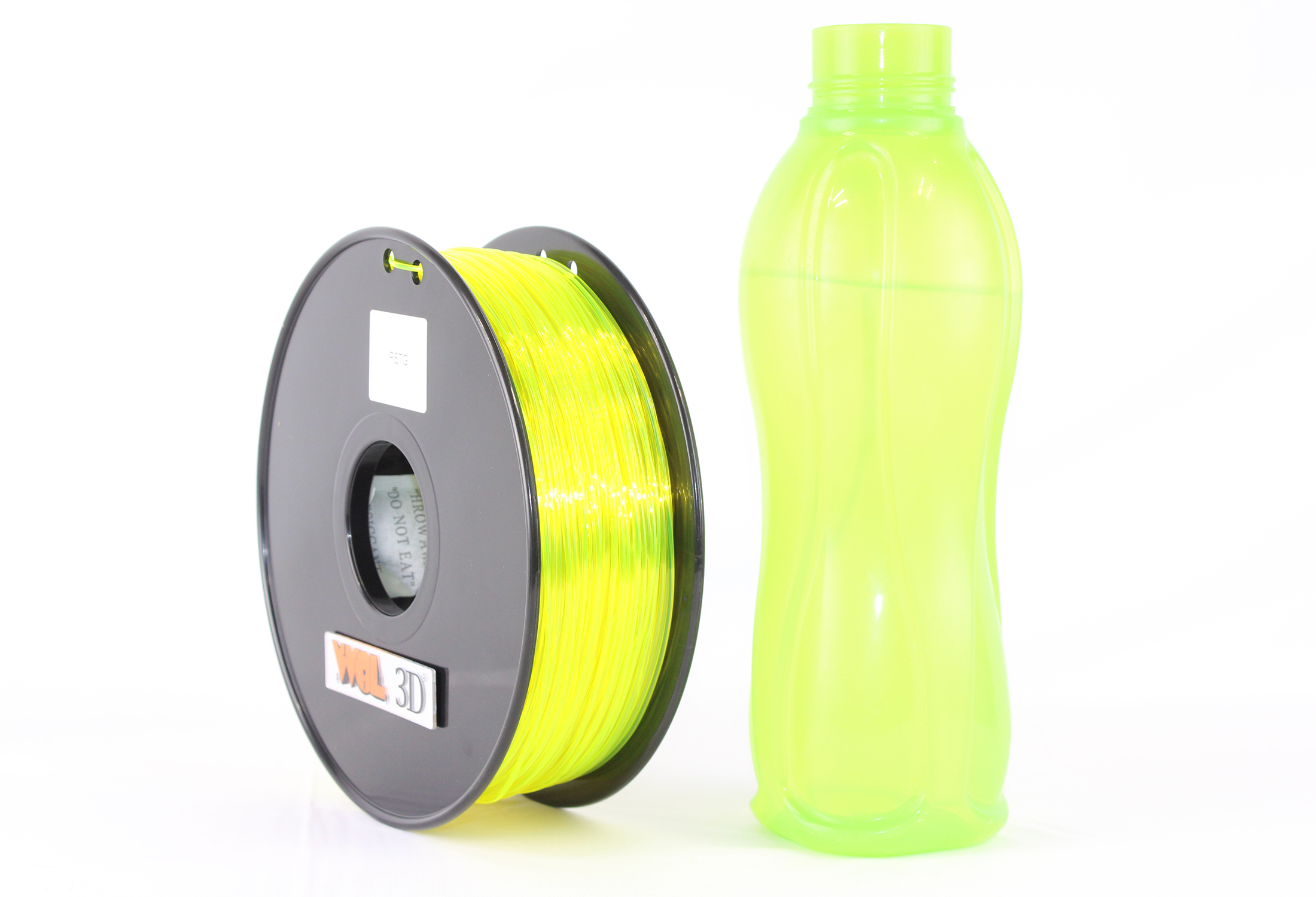
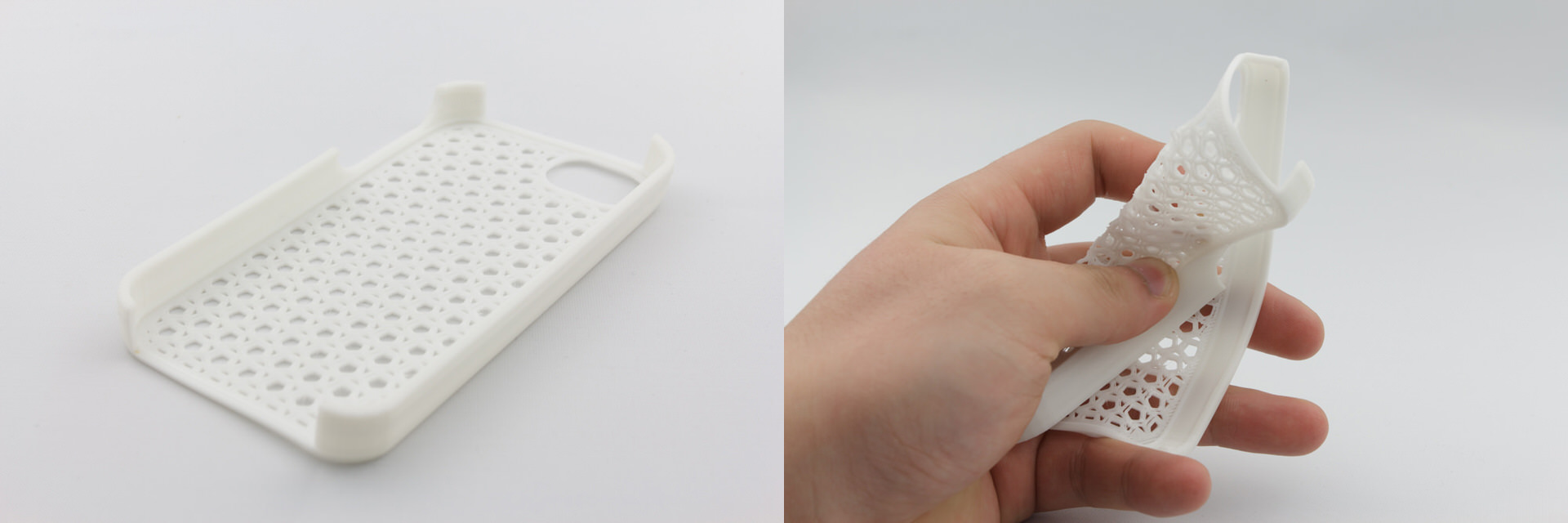
| Thermoplastic Polyurethane (TPU) | |
| Name | TPU (Flexible) |
| Strength | Medium |
| Flexibility | Very High |
| Durability | Very High |
| Difficulty to Use | Low |
| Print Temperature | 210°C – 230°C |
| Print Bed Temperature | 30°C – 60°C (but not needed) |
| Shrinkage/Warping | Minimal |
| Diameter | 1.75mm |
When should I use TPU (Flexible) 3D printer filament?
Use TPU when creating objects that need to take a lot of wear. If your print should bend, stretch, or compress, these are the right 3D printer filaments for the job. Example prints might include toys, phone cases, or wearable’s (like wristbands)
PETG
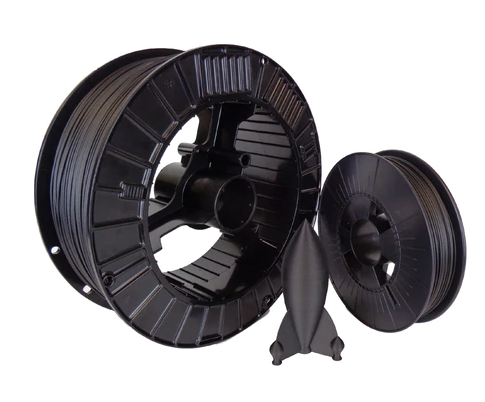
| Polycarbonate (PC) | |
| Name | PC (Polycarbonate) |
| Strength | Very High |
| Flexibility | Medium |
| Durability | Very High |
| Difficulty to Use | Medium |
| Print Temperature | 270°C – 310°C |
| Print Bed Temperature | 90°C – 110°C |
| Shrinkage/Warping | Considerable |
When should I use PETG 3D printer filament?
PETG is a good all-rounder but stands out from many other filaments due to its flexibility, strength, and temperature and impact resistance. This makes it an ideal 3D printer filament to use for objects which might experience sustained or sudden stress, like mechanical parts, printer parts, and protective components.
NYLON
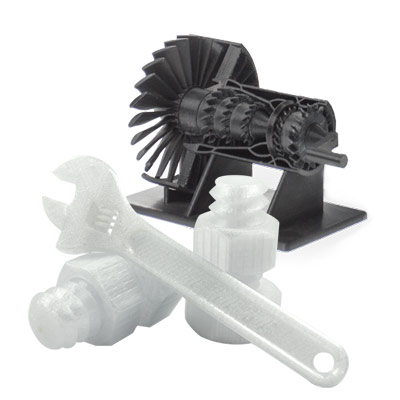
| Nylon | |
| Nylon, a popular family of synthetic polymers used in many industrial applications, is the heavyweight champion of the 3D printing world. | |
| Name | Nylon |
| Strength | High |
| Flexibility | High |
| Durability | High |
| Difficulty to Use | Medium |
| Print Temperature | 240°C – 260°C |
| Print Bed Temperature | 70°C – 100°C |
| Shrinkage/Warping | Considerable |
When should I use nylon 3D printer filament?
Taking advantage of nylon’s strength, flexibility, and durability use this 3D printer filament to create tools, functional prototypes, or mechanical parts (like hinges, buckles, or gears).
POLYCARBONATE

| Polycarbonate (PC) | |
| Name | PC (Polycarbonate) |
| Strength | Very High |
| Flexibility | Medium |
| Durability | Very High |
| Difficulty to Use | Medium |
| Print Temperature | 270°C – 310°C |
| Print Bed Temperature | 90°C – 110°C |
| Shrinkage/Warping | Considerable |
When should I use PC 3D printer filament?
MULTI COLOR
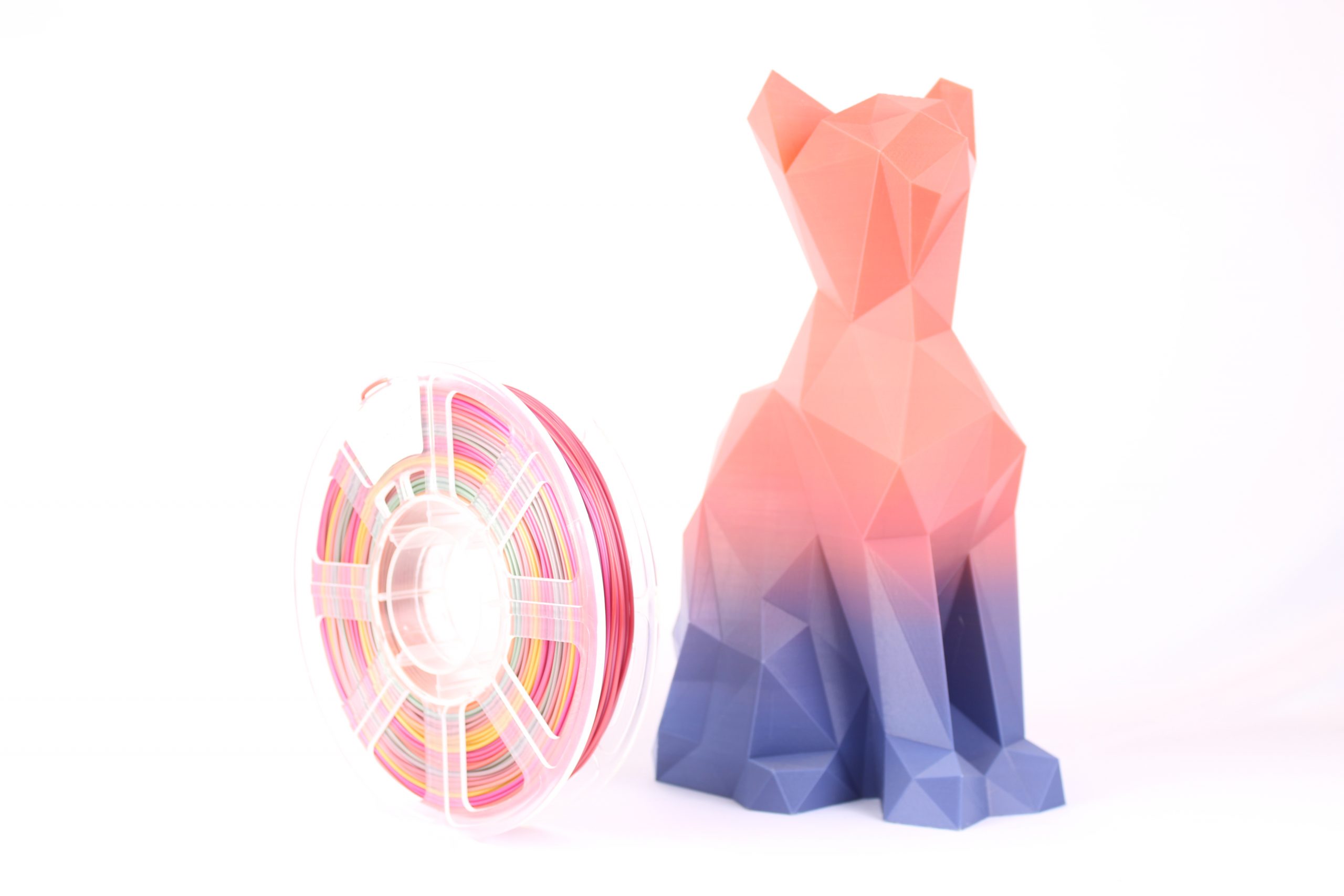
| MULTICOLOR | |
| Strength | High |
| Flexibility | Low |
| Durability | Medium |
| Difficulty to Use | Low |
| Print Temperature | 190°C – 220°C |
| Print Bed Temperature | 40°C – 60°C (but not needed) |
| Shrinkage/Warping | Minimal |
| Diameter | 1.75mm |
When should I use Multicolor 3D printer filament?
Give your 3D prints a unique design. Each print will be one of a kind. Prints include models, low-wear toys, prototype parts, and containers. Suitable for complex models.
WOOD
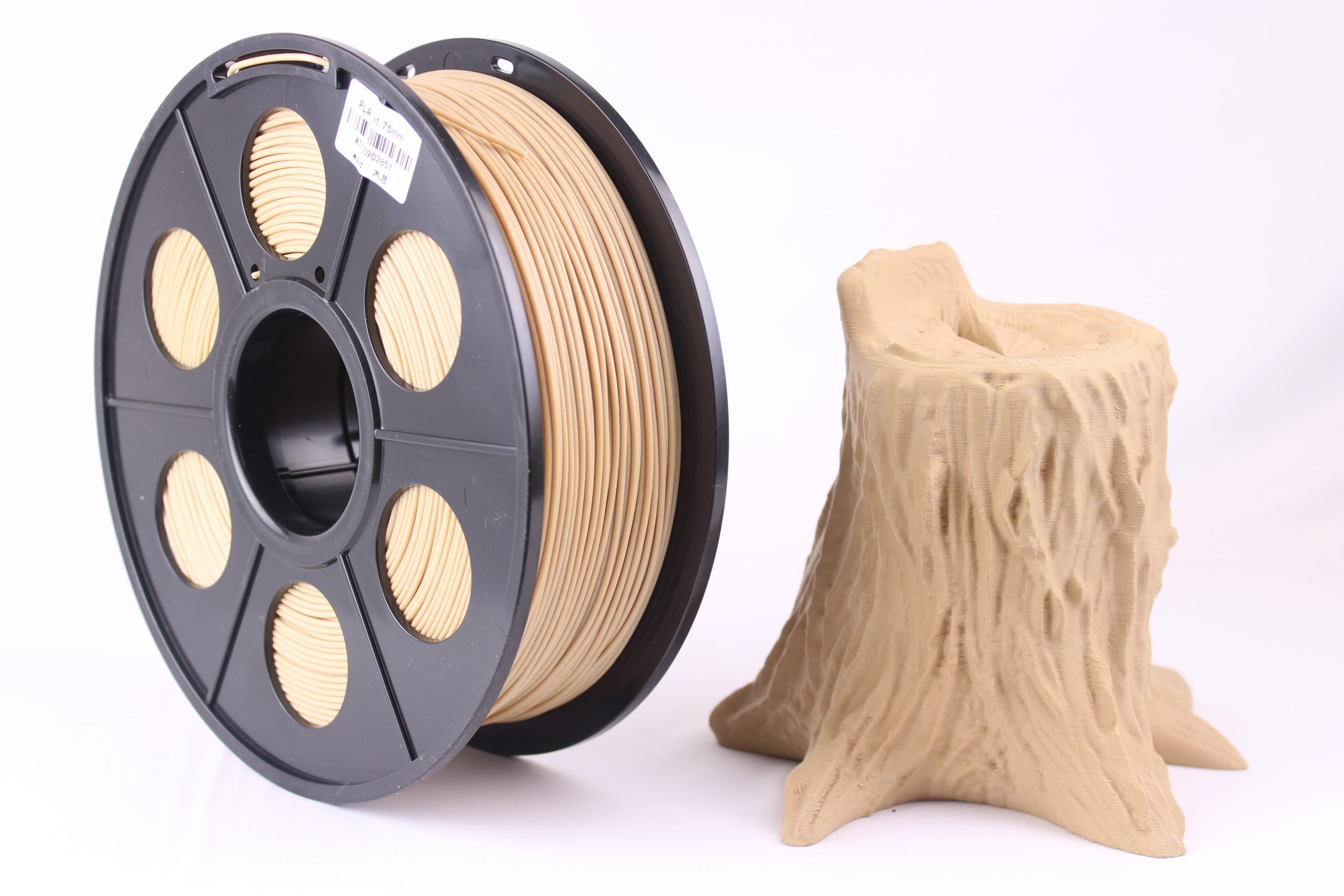
| WOOD | |
| Material | PLA infused with wood fiber |
| Strength | High |
| Flexibility | Low |
| Durability | Medium |
| Difficulty to Use | Low |
| Print Temperature | 180°C – 230°C |
| Print Bed Temperature | 20°C – 60°C (but not needed) |
| Shrinkage/Warping | Minimal |
| Diameter | 1.75mm |
When should I use Wood 3D printer filament?
Wood is popular with items that are appreciated less for their functional capabilities, and more for their appearance. Consider using wood 3D printer filament when printing objects that are displayed on a desk, table, or shelf. Examples include bowls, figurines, and awards. One really creative application of wood as a 3D printer filament is in the creation of scale models, such as those used in architecture.
METAL
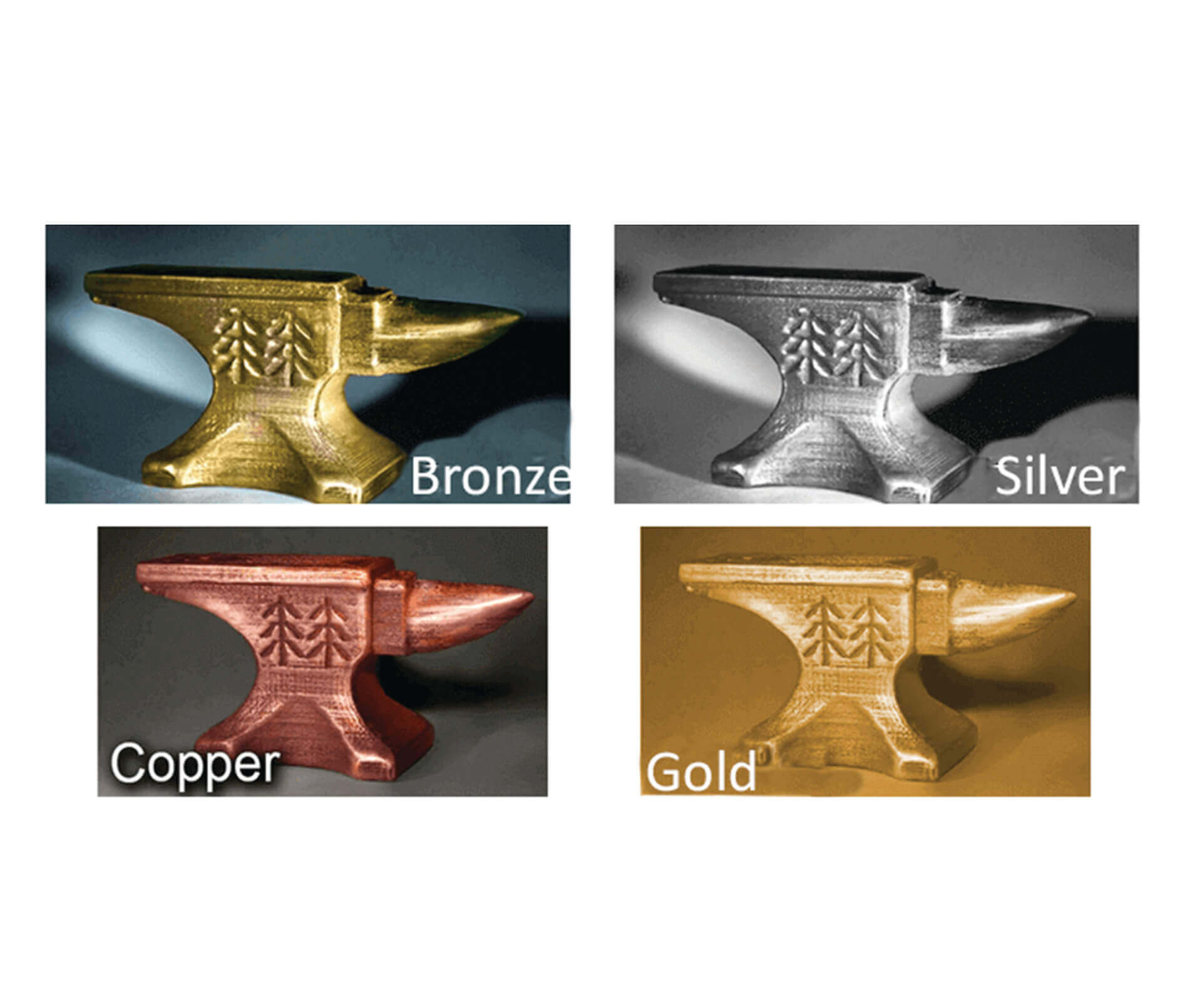
| METAL | |
| Material | PLA with mix of metal powder |
| Strength | High |
| Flexibility | Low |
| Durability | Medium |
| Difficulty to Use | Low |
| Print Temperature | 190°C – 220°C |
| Print Bed Temperature | 20°C – 60°C (but not needed) |
| Shrinkage/Warping | Minimal |
| Diameter | 1.75mm |
When should I use Metal 3D printer filament?
Metal can be used to print for aesthetics and for function. Figurines, models, toys, and tokens can all look great printed in metal. And as long as they don’t have to deal with too much stress, feel free to use metal 3D printer filament to create parts with purpose, like tools, grates, or finishing components.
CONDUCTIVE ABS
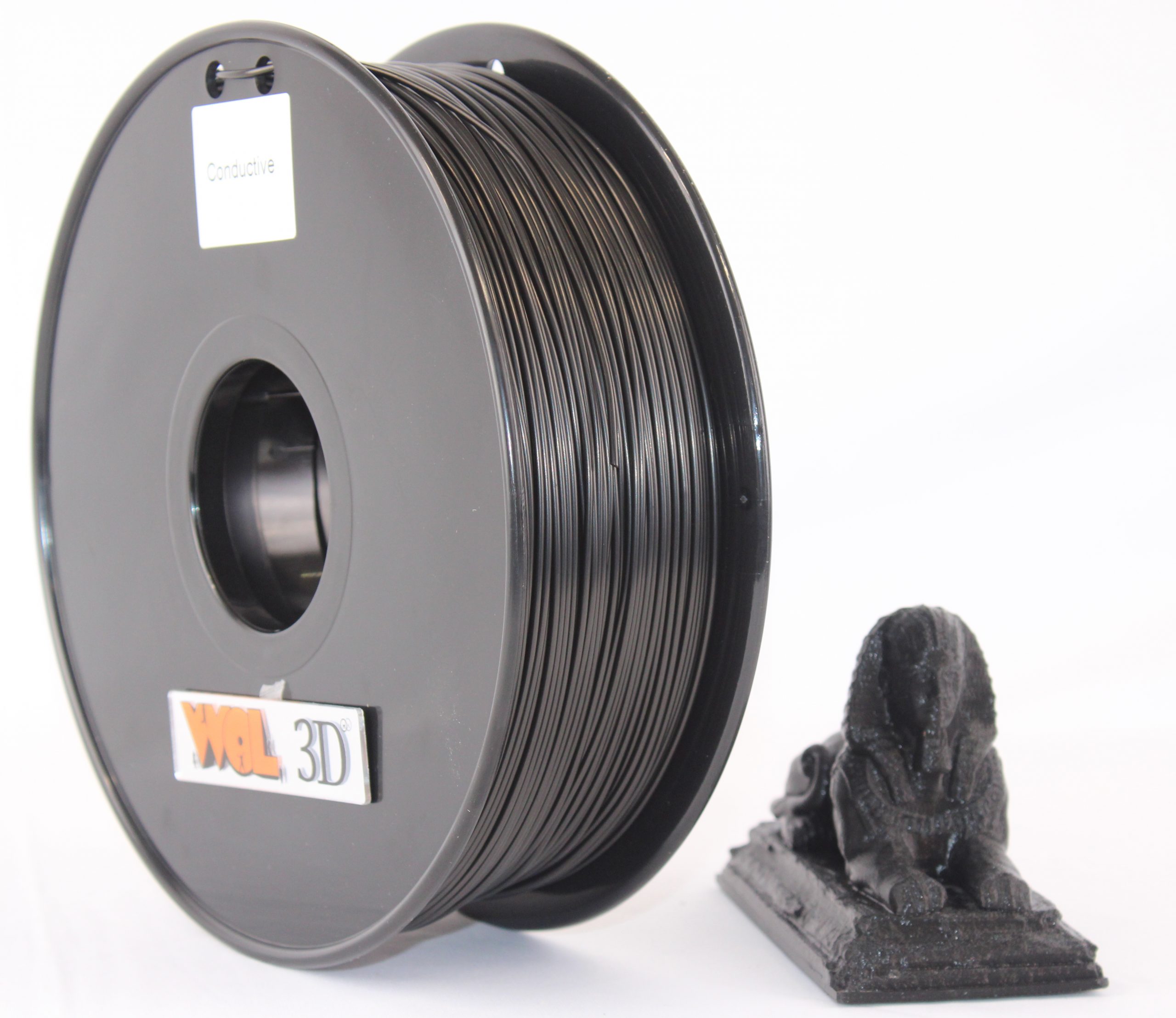
| CONDUCTIVE ABS | |
| Material | Conductive carbon particulates to ABS |
| Strength | High |
| Flexibility | Low |
| Durability | High |
| Difficulty to Use | Medium |
| Print Temperature | 220 – 250°C |
| Print Bed Temperature | 80 – 110°C |
| Shrinkage/Warping | Considerable |
| Diameter | 1.75mm |
When should I use Conductive ABS 3D printer filament?
Even though this 3D printer filament only supports low-voltage circuitry, the sky’s the limit with customized electronics projects. If you’re experimenting, try coupling a circuit board with LEDs, sensors, or even a Raspberry Pi! If you’re looking for something a little more specific, popular ideas include gaming controllers, digital keyboards, and trackpads.
GLOW IN THE DARK
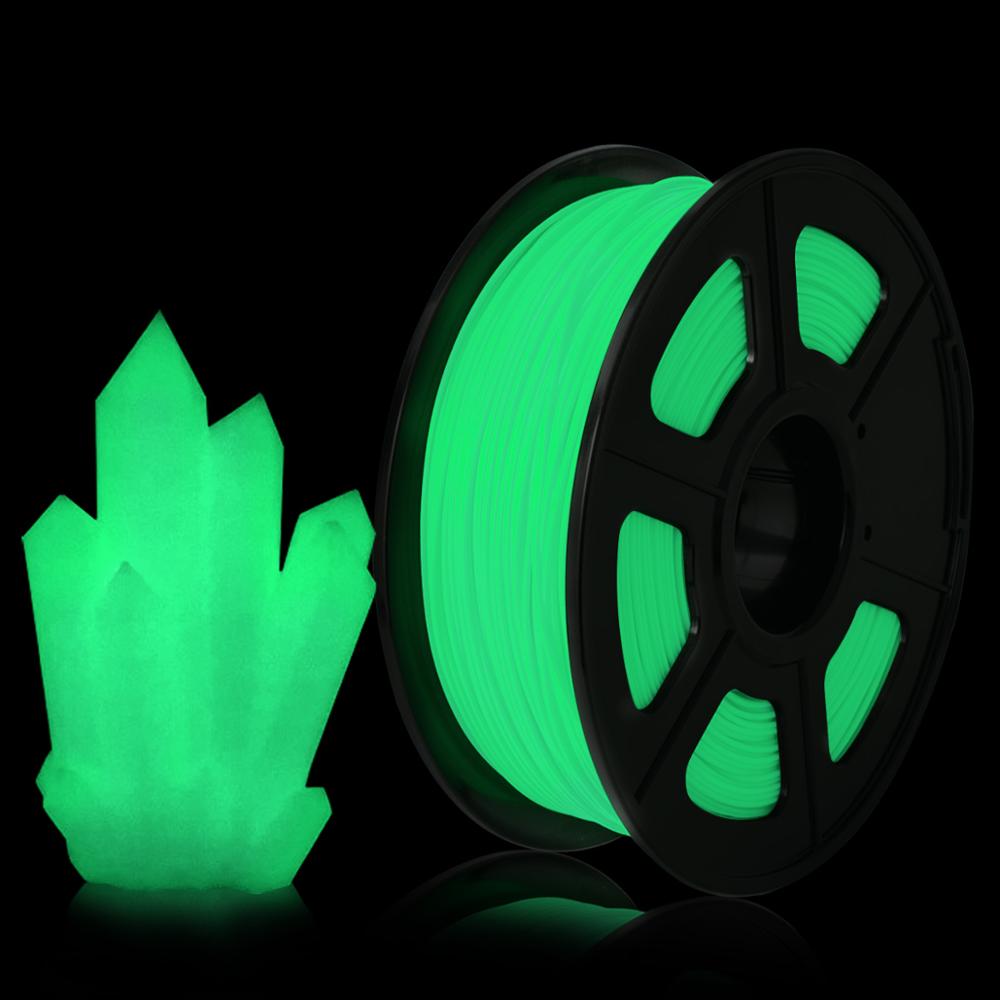
| GLOW IN THE DARK | |
| Strength | High |
| Flexibility | Low |
| Durability | Medium |
| Difficulty to Use | Low |
| Print Temperature | 190°C – 220°C |
| Print Bed Temperature | 20°C – 60°C (but not needed) |
| Shrinkage/Warping | Minimal |
| Diameter | 1.75mm |
When should I use Glow in the dark 3D printer filament?
Thinking about that eerie green/blue glow, it almost doesn’t even seem necessary to suggest using a glow-in-the-dark 3D printer filament for Halloween projects, like jack-o’-lanterns or window decorations. Other examples of where these filaments really shine – er, glow – include wearable (think jewelry), toys, and figurines.
CHANGE IN TEMPERATURE
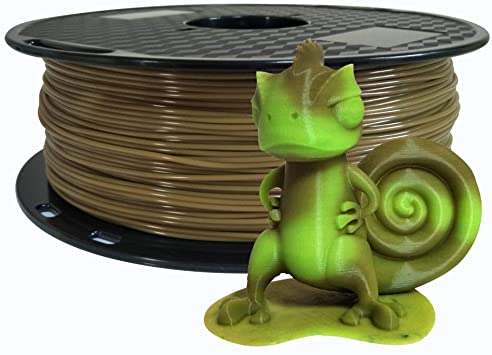
| CHANGE IN TEMPERATURE | |
| Strength | High |
| Flexibility | Low |
| Durability | Medium |
| Difficulty to Use | Low |
| Print Temperature | 180°C – 230°C |
| Print Bed Temperature | 20°C – 60°C (but not needed) |
| Shrinkage/Warping | Minimal |
| Diameter | 1.75mm |
When should I use Change in temperature 3D printer filament?
With no special physical, tactile, or functional characteristics, this type of 3D printer filament is purely good for aesthetics. Use it whenever you would normally use PLA or ABS, but desire that extra visual flare. Good candidate projects include phone cases, wearables, toys, and containers.
MARBLE
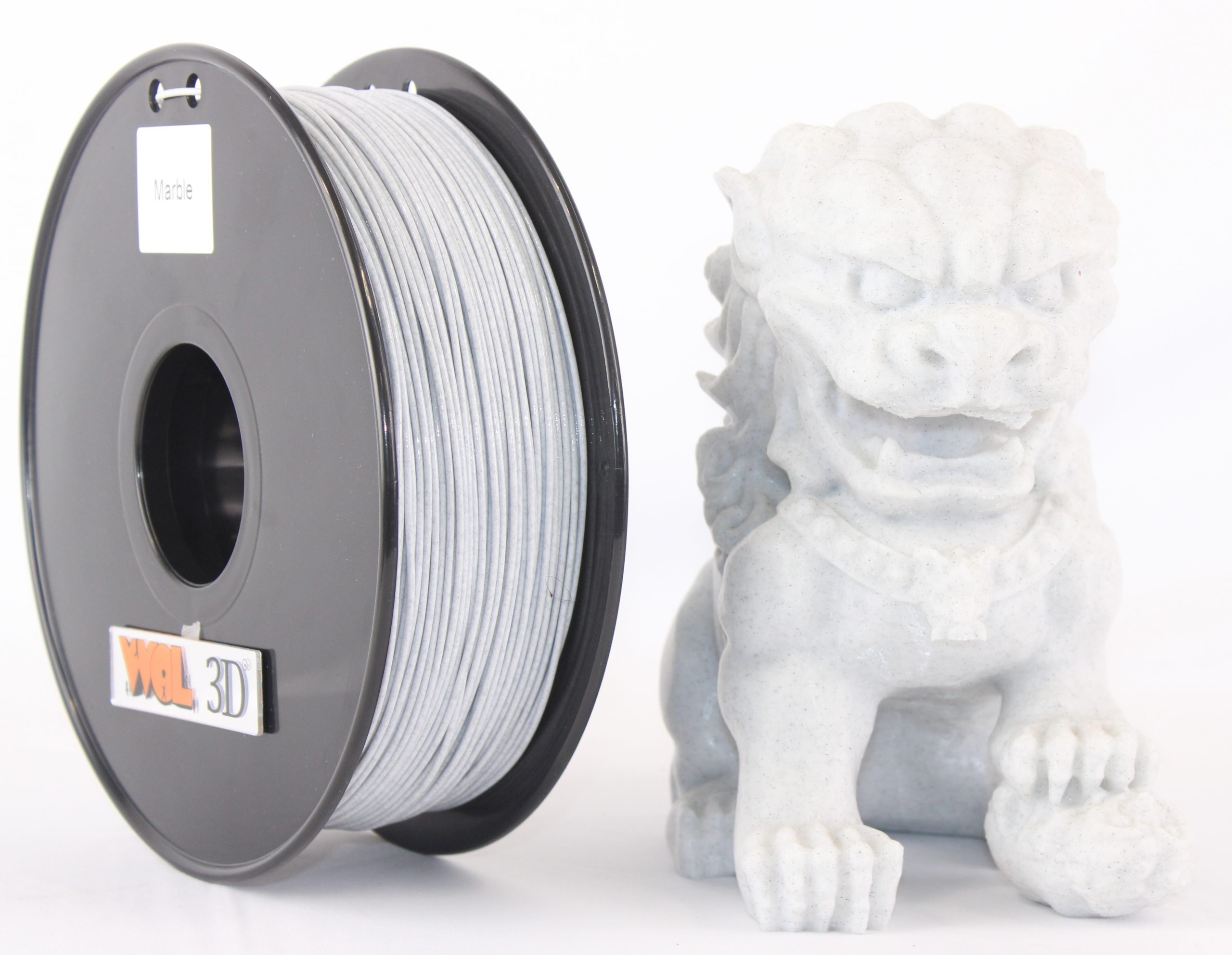
| MARBLE | |
| Strength | High |
| Flexibility | Low |
| Durability | Medium |
| Difficulty to Use | Medium |
| Print Temperature | 200°C – 230°C |
| Print Bed Temperature | 60°C – 80°C or 0°C |
| Shrinkage/Warping | Minimal |
| Diameter | 1.75mm |
When should I use Marble 3D printer filament?
Marble is ideal for hobbyists and for craft works because you can work its “chalky” surface with various tools.
TWINKLING
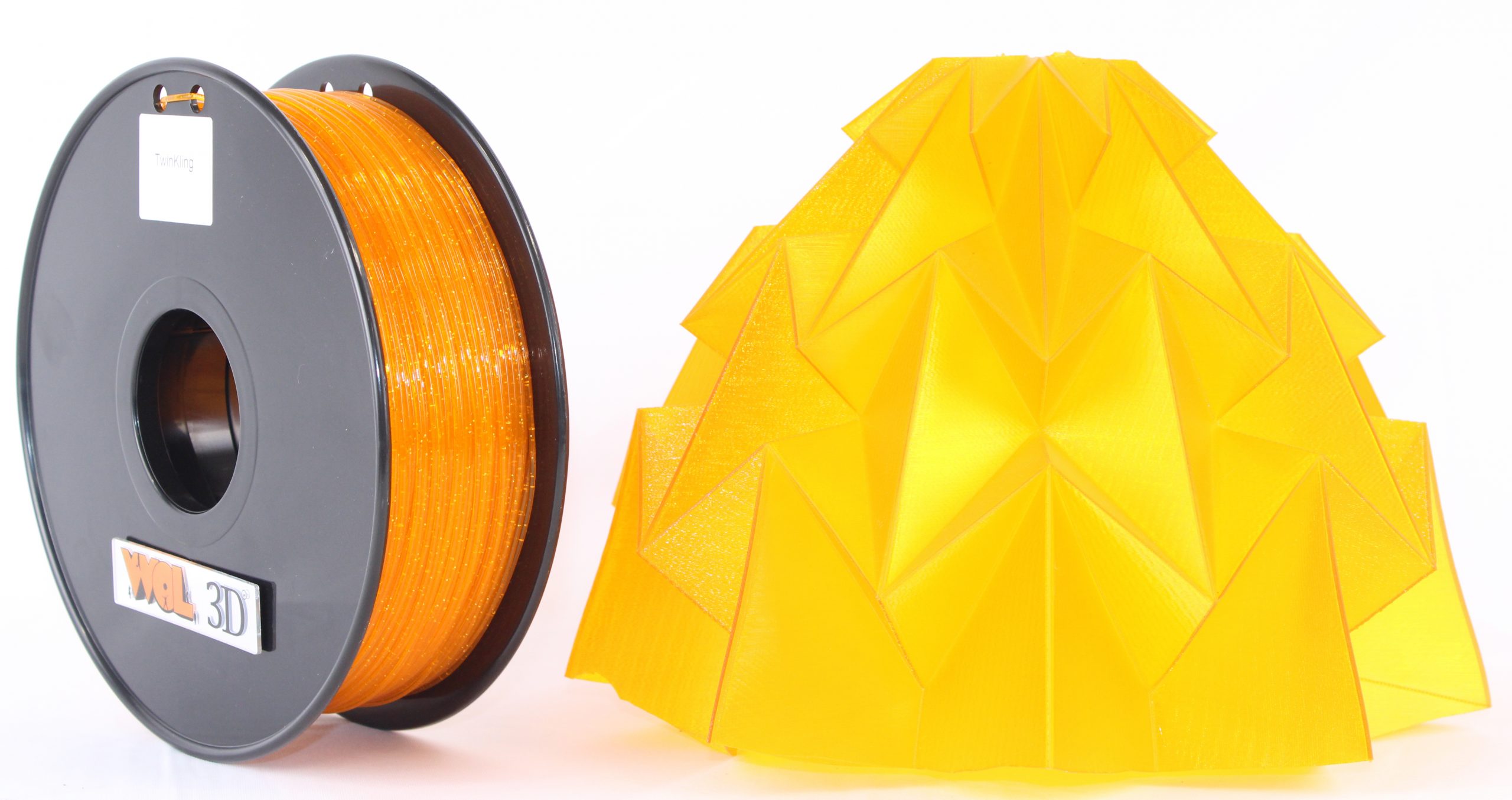
| TWINKLING | |
| Strength | High |
| Flexibility | Low |
| Durability | Medium |
| Difficulty to Use | Low |
| Print Temperature | 200°C – 230°C |
| Print Bed Temperature | 60°C – 80°C or 0°C |
| Shrinkage/Warping | Considerable |
| Diameter | 1.75mm |
When should I use Twinkling 3D printer filament?
Because of the special appearance, the twinkling filament is usually used to print some beautiful decorations or art design objects.
CARBON FIBER
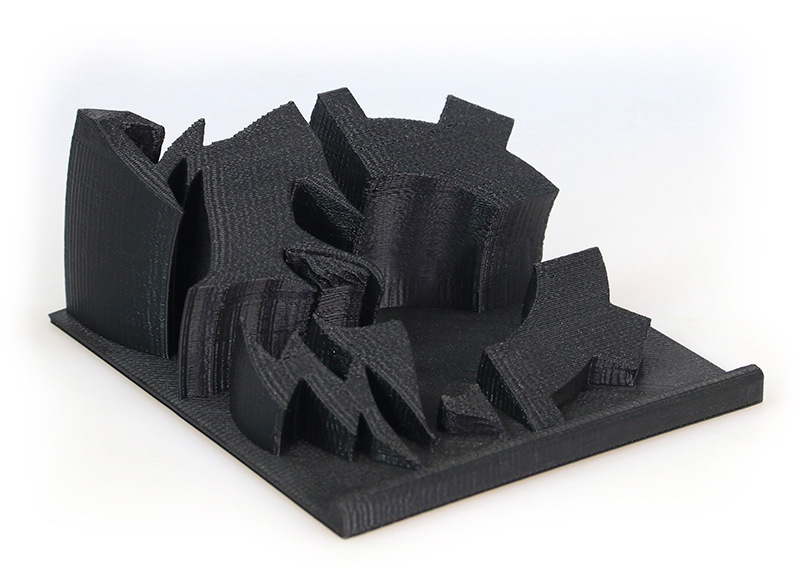
| CARBON FIBER PLA | |
| Strength | High |
| Flexibility | Low |
| Durability | Medium |
| Difficulty to Use | Low |
| Print Temperature | 190°C – 220°C |
| Print Bed Temperature | 20°C – 60°C (but not needed) |
| Shrinkage/Warping | Minimal |
| Diameter | 1.75mm & 2.85mm |
When should I use Carbon fiber PLA 3D printer filament?
Thanks to its structural strength and low density, carbon fiber is a fantastic candidate for mechanical and body components. Looking to replace a part in your model car or plane? Give this 3D printer filament a try.
SILK FILL
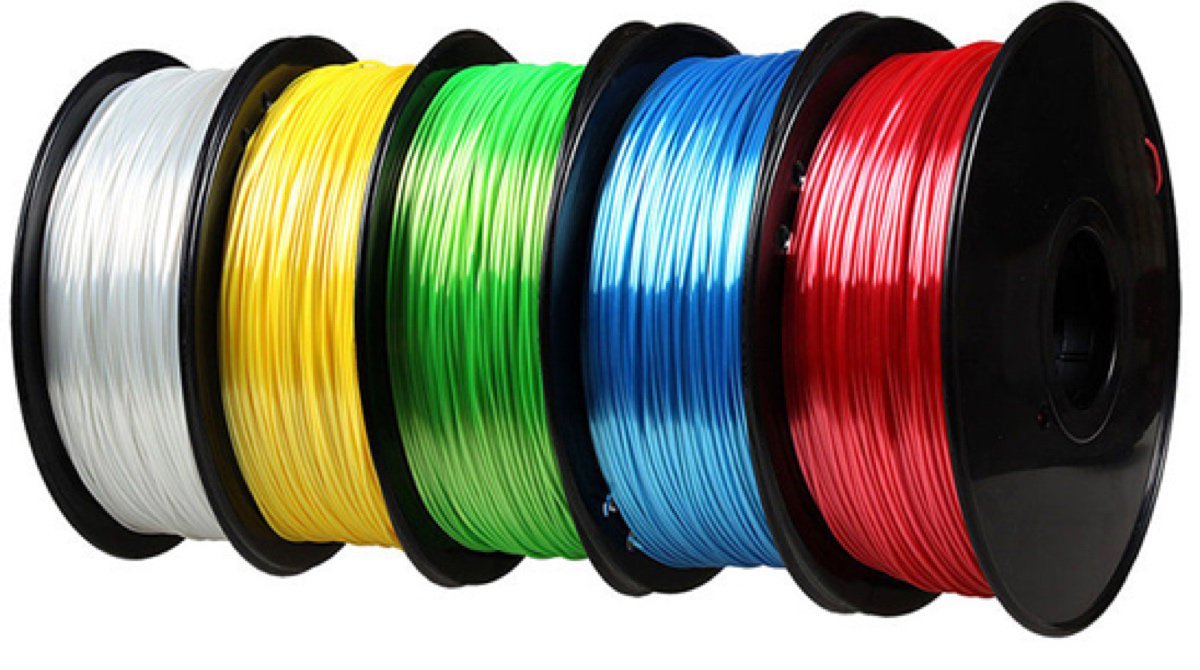
| SILK | |
| Strength | High |
| Flexibility | Low |
| Durability | Medium |
| Difficulty to Use | Low |
| Print Temperature | 190°C – 220°C |
| Print Bed Temperature | 40°C – 60°C (but not needed) |
| Shrinkage/Warping | Minimal |
| Diameter | 1.75mm |
When should I use SILK 3D printer filament?
Very suitable for lamps, vases, clothing decoration and crafts wedding gift etc.
PC+ABS
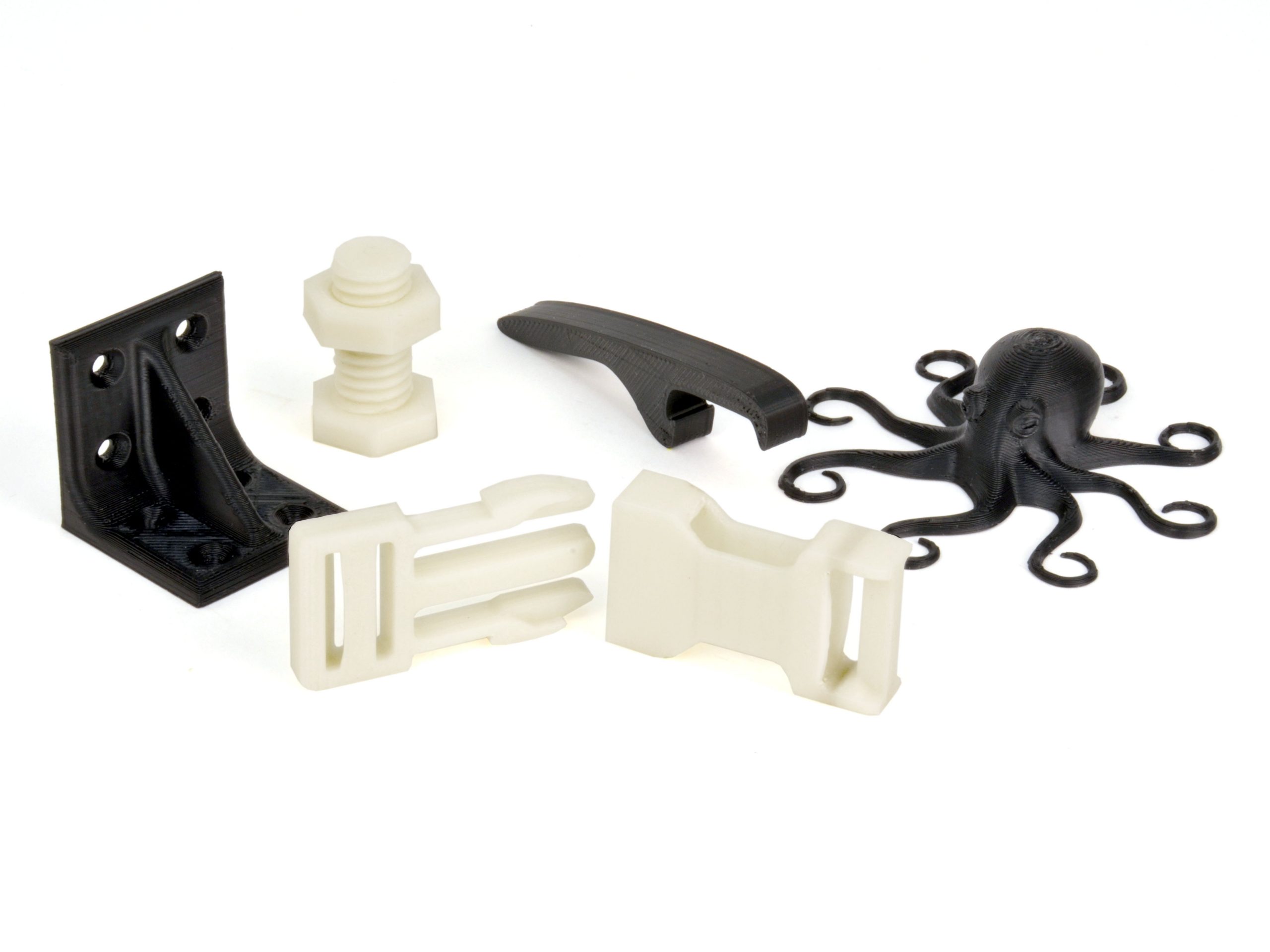
| PC-ABS | |
| Strength | High |
| Flexibility | Medium |
| Durability | High |
| Difficulty to Use | Medium |
| Print Temperature | 230-270°C |
| Print Bed Temperature | 100-120°C |
| Shrinkage/Warping | Minimal |
| Diameter | 1.75mm |
When should I use PC-ABS 3D printer filament?
PC-ABS alloys the mechanical properties & high-heat resistance of PC with the printability of ABS and allows for the printing of functional prototypes and production parts with very fine detail and excellent surface quality. Widely used in automotive interior parts, business machines, communications equipment, home appliances and lighting equipment.
HIPS
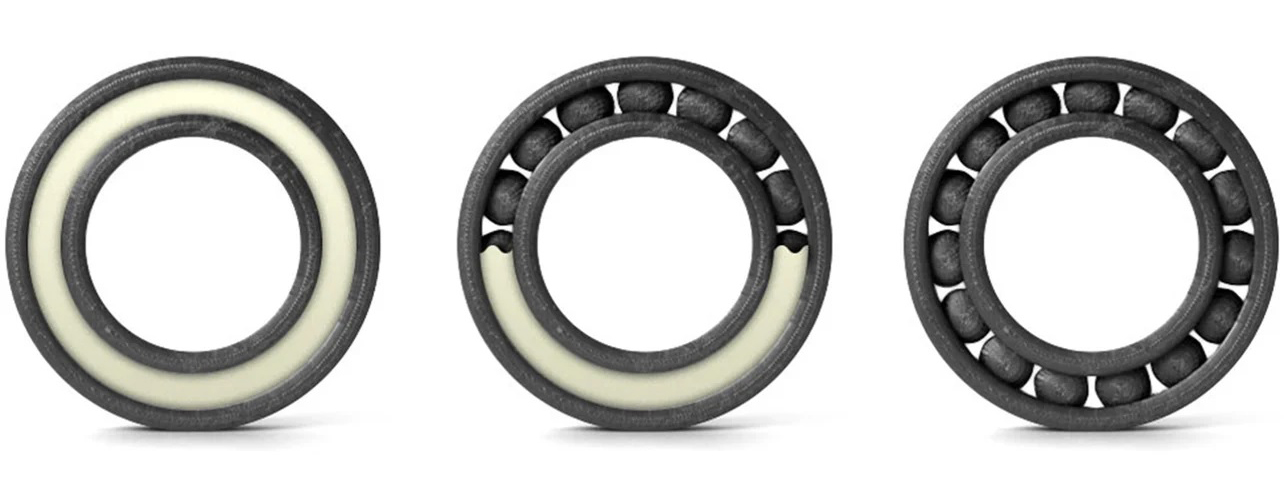
| HIPS | |
| Strength | High |
| Flexibility | Medium |
| Durability | High |
| Difficulty to Use | Low |
| Print Temperature | 230-270°C |
| Print Bed Temperature | 100-120°C |
| Shrinkage/Warping | Minimal |
| Diameter | 1.75mm |
When should I use HIPS 3D printer filament?
The ability to build models with good representation of of detail. The matte finish of the models works great in the construction of architectural models. Use in construction of engineering models with large sizes at minimum shrinkage.
PVA
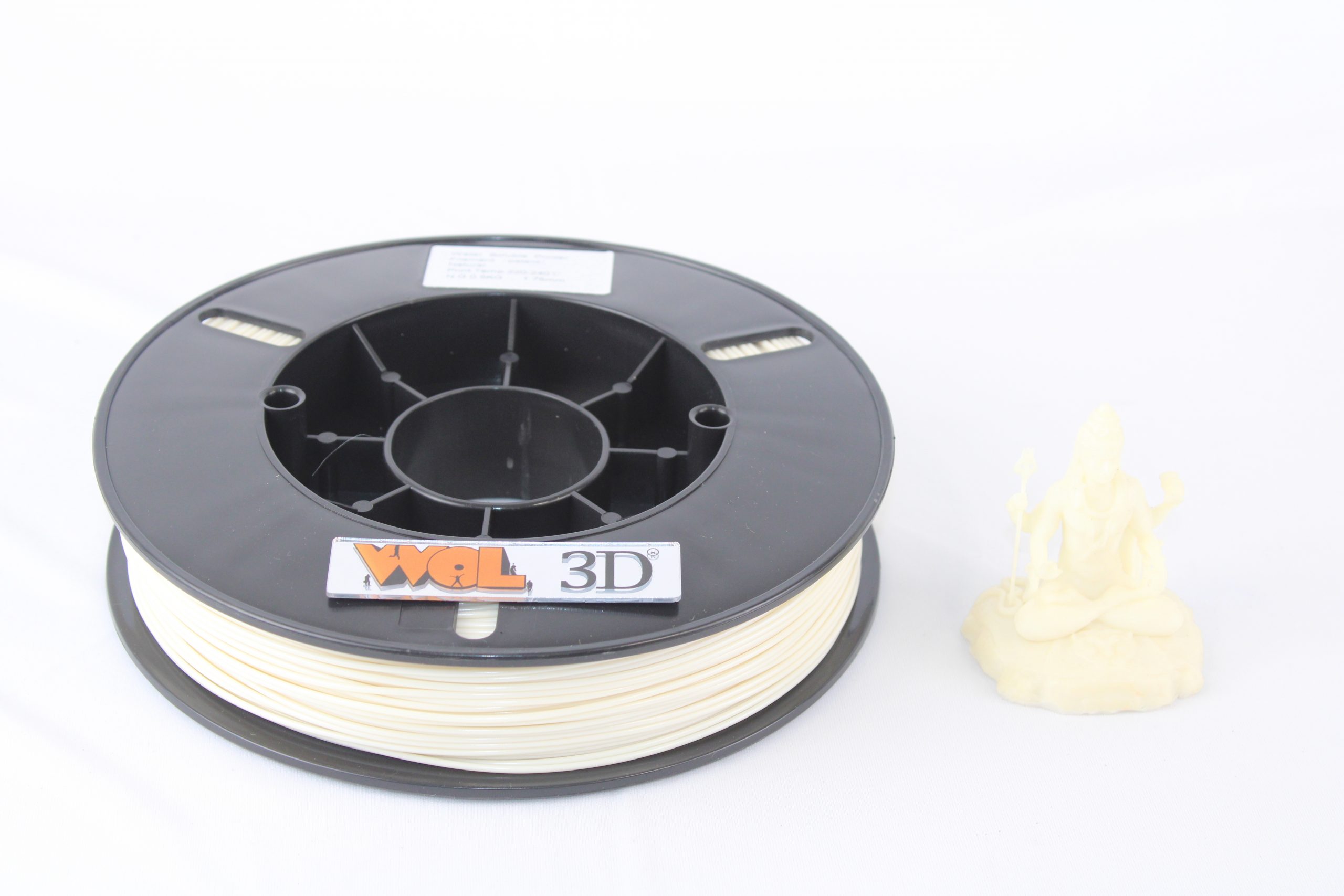
| PVA | |
| Strength | High |
| Flexibility | Medium |
| Durability | High |
| Difficulty to Use | Medium |
| Print Temperature | 230-270°C |
| Print Bed Temperature | 100-120°C |
| Shrinkage/Warping | Minimal |
| Diameter | 1.75mm |
When should I use PVA 3D printer filament?
PVA filament is soluble in water and attaches well to different sorts of plastics. Because of these properties PVA filament is an excellent supporting material for dual extruder 3D printing. It creates a wide array of new possibilities.
ASA
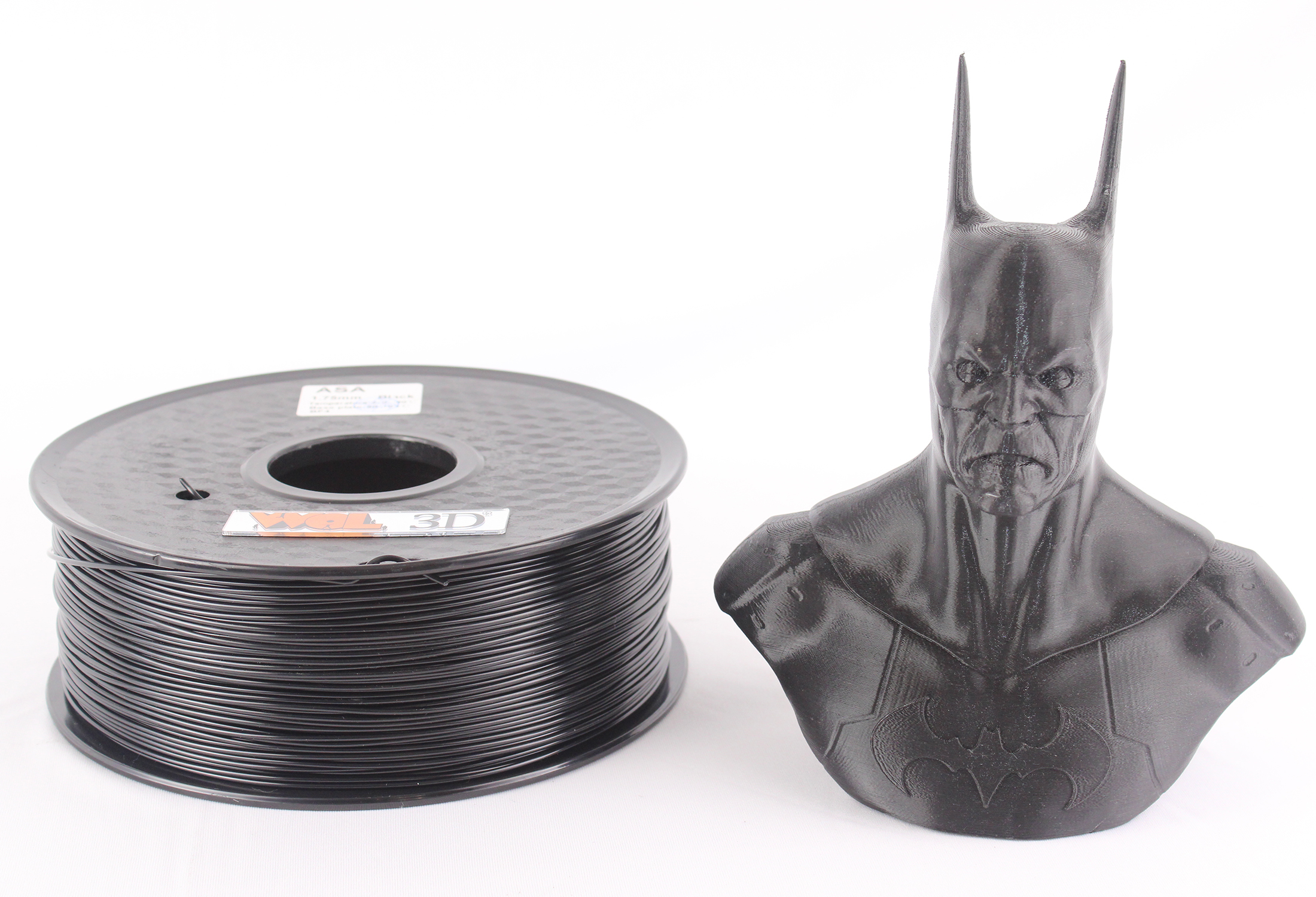
| ASA – Acrylonitrile Styrene Acrylate | |
| Strength | High |
| Flexibility | Low |
| Durability | High |
| Difficulty to Use | Medium |
| Print Temperature | 235 – 255°C |
| Print Bed Temperature | 90-110°C |
| Shrinkage/Warping | Minimal |
| Diameter | 1.75mm |
When should I use ASA 3D printer filament?
A perfect filament for technical prints – especially when you don’t want the high-gloss surface finish. Whether you’re printing for business or education this is fast becoming a popular 3d printing material for outdoor applications.
POM (ACETAL)
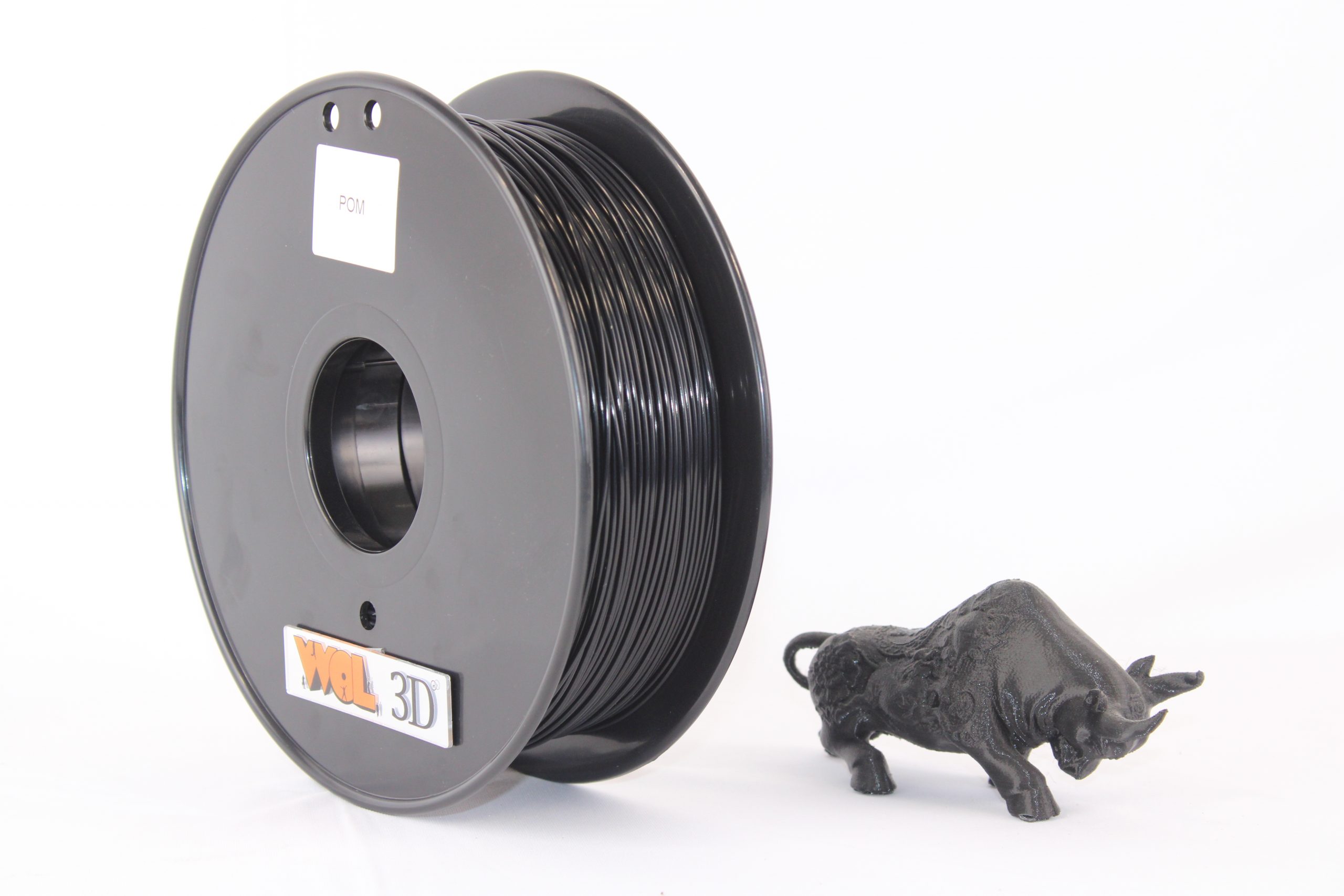
| Polyoxymethylene (POM) | |
| Strength | High |
| Flexibility | Low |
| Durability | Medium |
| Difficulty to Use | Medium |
| Print Temperature | 210 – 225°C |
| Print Bed Temperature | 120-140°C |
| Shrinkage/Warping | Minimal |
| Diameter | 1.75mm |
When should I use POM 3D printer filament?
It is used to produce precision parts that require high resistance to abrasion and heat, low friction, good dimensional stability, resistance to water absorption, and high tolerance. It is a great product if you have repeated use and need high stiffness, low friction or high impact resistance and can make products like ball bearings, gears or lock systems.
CERAMIC
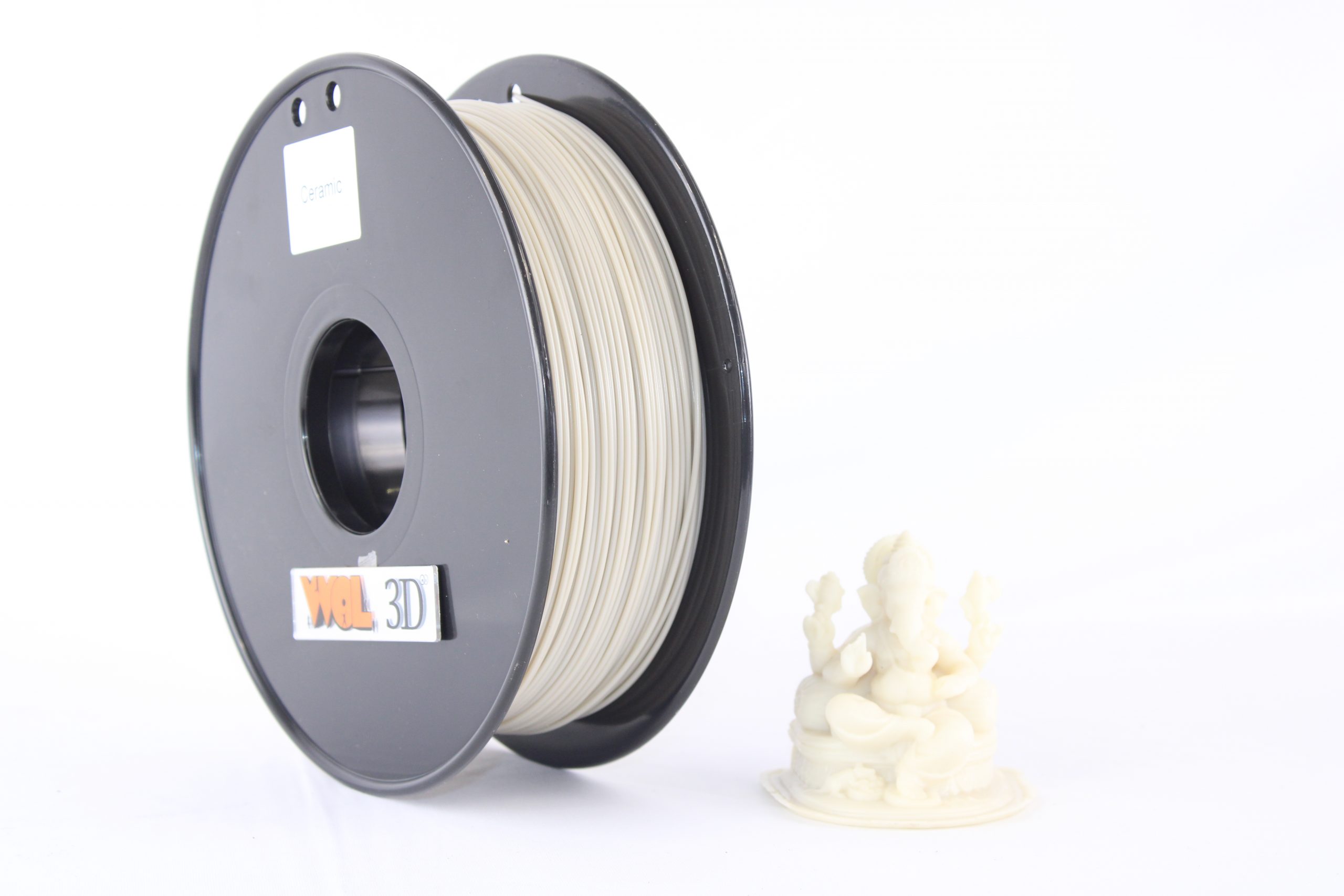
| Ceramic | |
| Strength | High |
| Flexibility | Low |
| Durability | Medium |
| Difficulty to Use | Medium |
| Print Temperature | 200-240°C |
| Print Bed Temperature | 60-80°C |
| Shrinkage/Warping | Minimal |
| Diameter | 1.75mm |
When should I use Ceramic 3D printer filament?
Ceramic is a great material to use for cups, plates, statues, or figurines.
PETG – CARBON FIBER
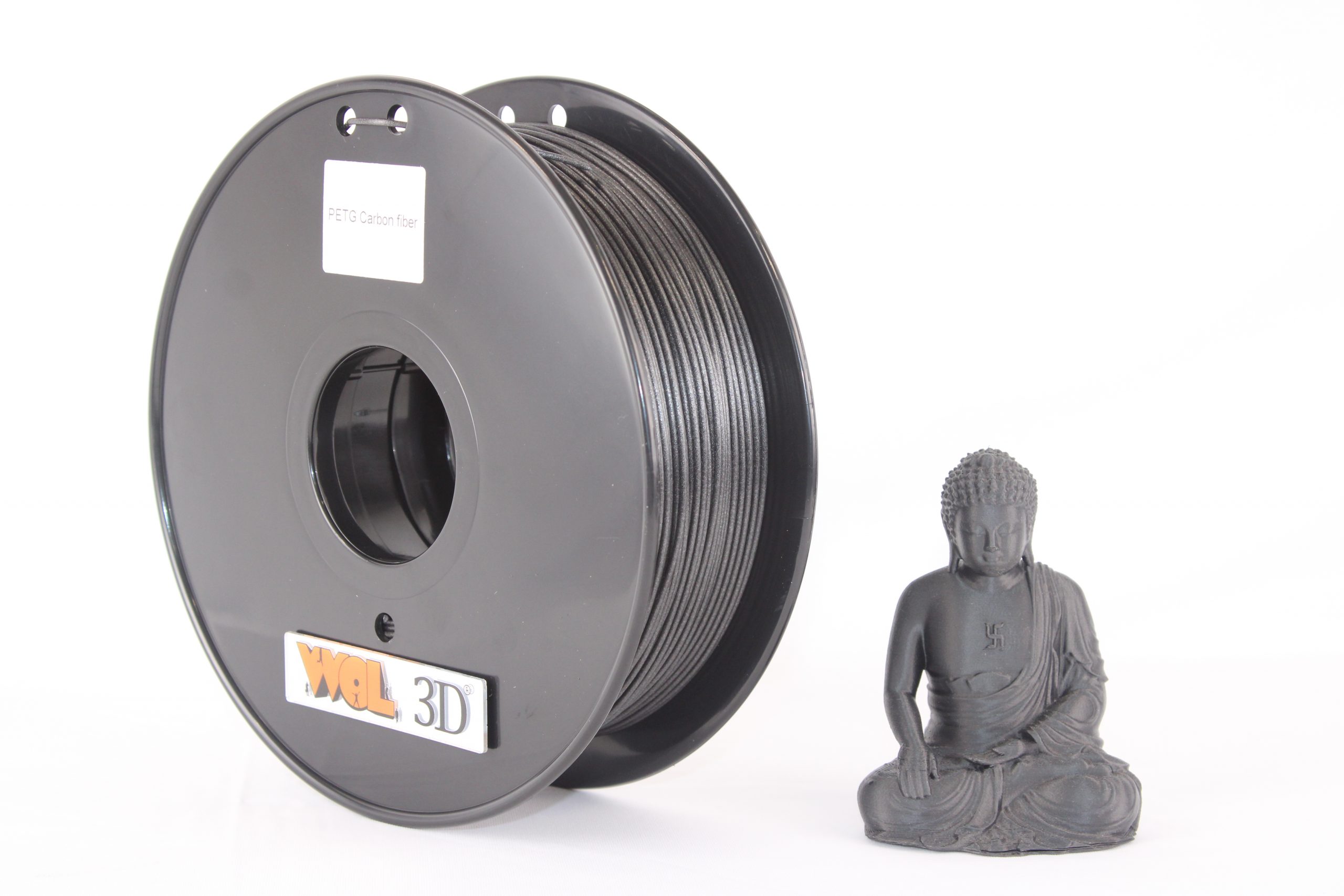
| Carbon Fiber PETG | |
| Strength | High |
| Flexibility | Medium |
| Durability | High |
| Difficulty to Use | Low |
| Print Temperature | 230°C – 250°C |
| Print Bed Temperature | 80°C – 100°C |
| Shrinkage/Warping | Minimal |
| Diameter | 1.75mm |
When should I use Carbon fiber PETG 3D printer filament?
Thanks to its structural strength and low density, carbon fiber is a fantastic candidate for mechanical and body components. Looking to replace a part in your model car or plane? Give this 3D printer filament a try.
H-PLA
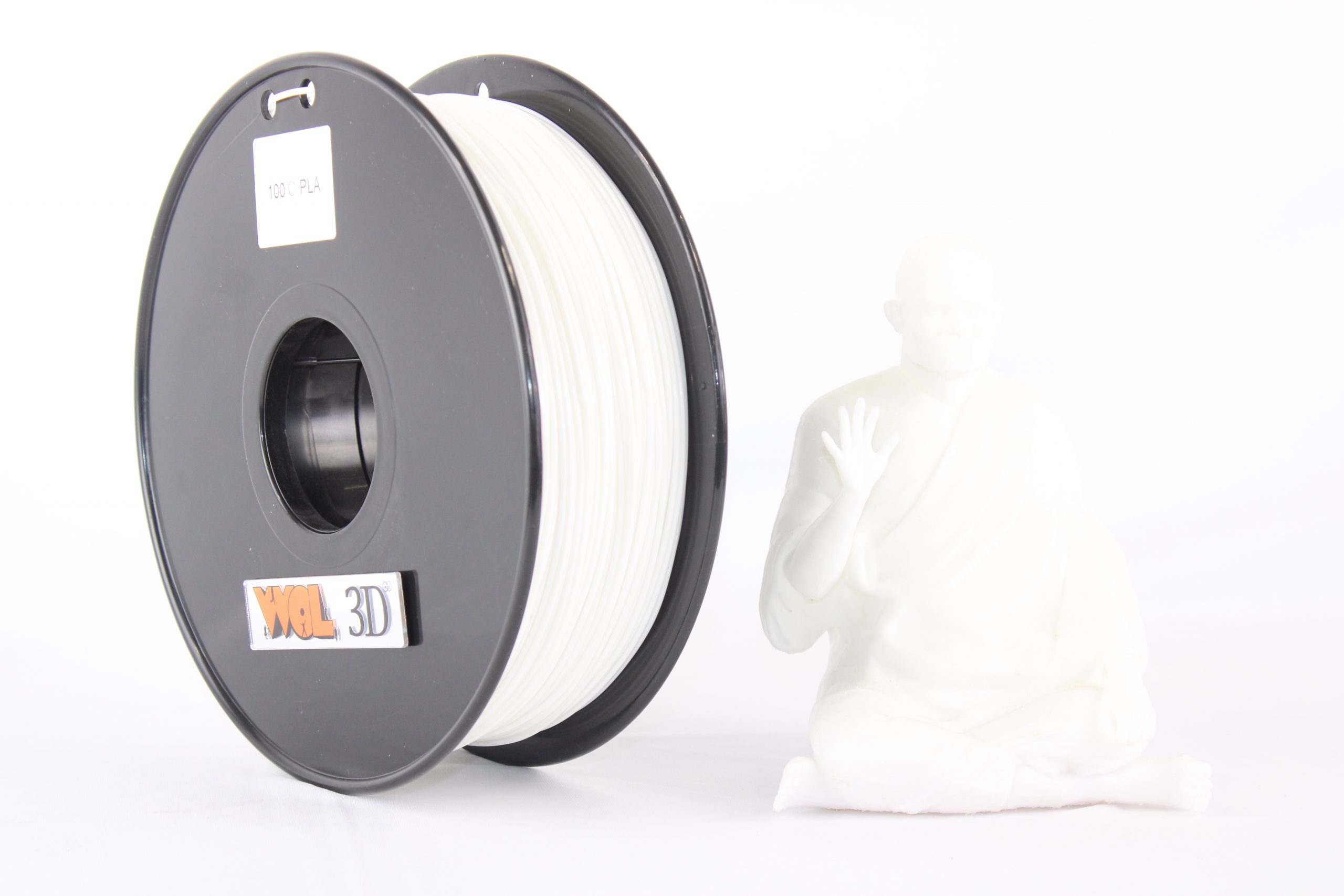
| H-PLA | |
| Strength | High |
| Flexibility | Low |
| Durability | High |
| Difficulty to Use | Medium |
| Print Temperature | 200-240°C |
| Print Bed Temperature | 60-80°C (or Hetabed 0°C with High Temperature Paper Tape) |
| Shrinkage/Warping | Considerable |
| Diameter | 1.75mm |
When should I use H-PLA 3D printer filament?
Widely used in health care, education, toys, building, automobile, electronics, prototype parts, and containers.
FLAME RETARDENT ABS
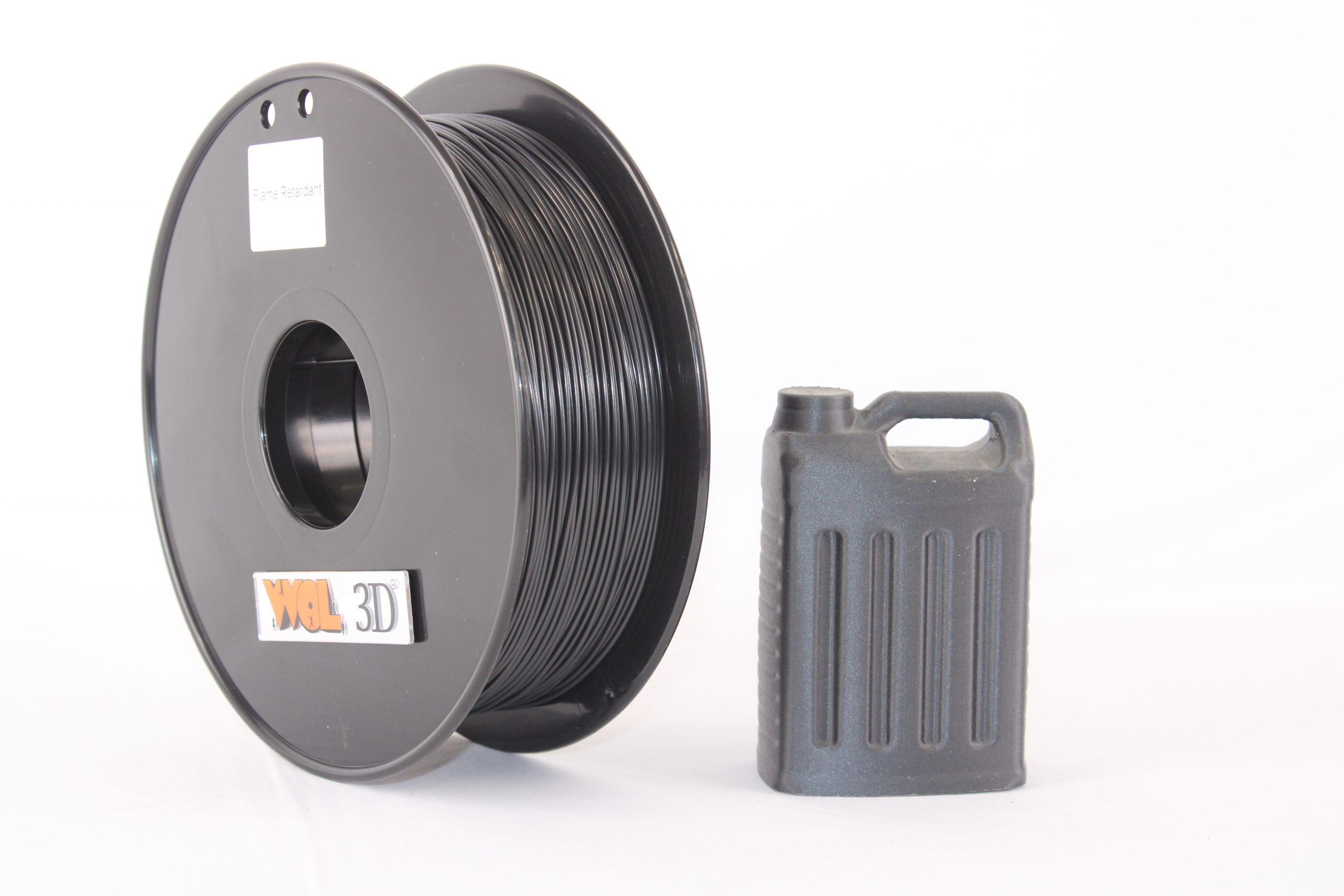
| FLAME RETARDANT ABS | |
| Strength | High |
| Flexibility | Low |
| Durability | High |
| Difficulty to Use | Medium |
| Print Temperature | 230-250°C |
| Print Bed Temperature | 80°C – 110°C |
| Shrinkage/Warping | Considerable |
| Diameter | 1.75mm |
When should I use Flame Retardant ABS 3D printer filament?
Widely used in health care, education, toys, building, automobile, electronics, etc.
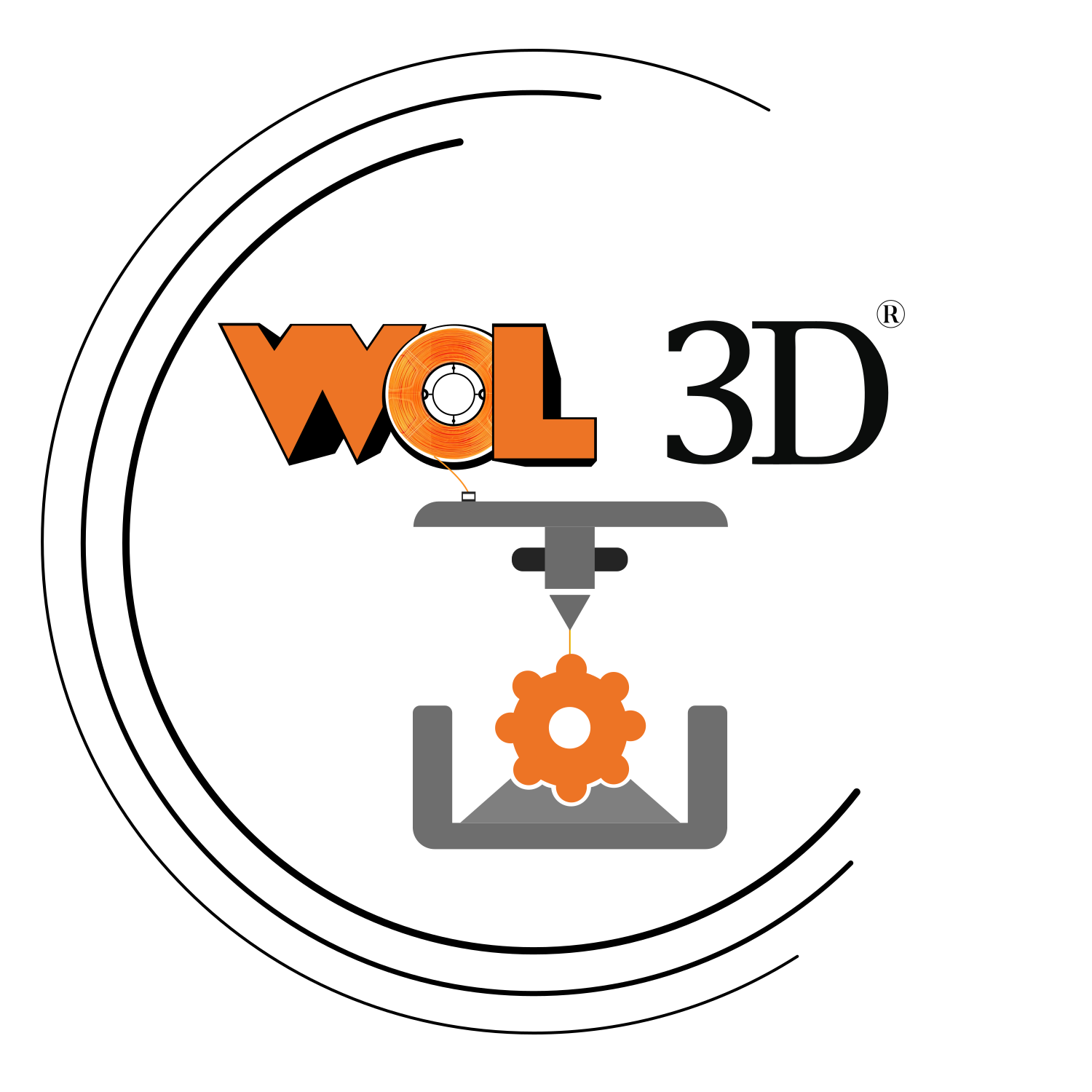


































Reviews
There are no reviews yet.